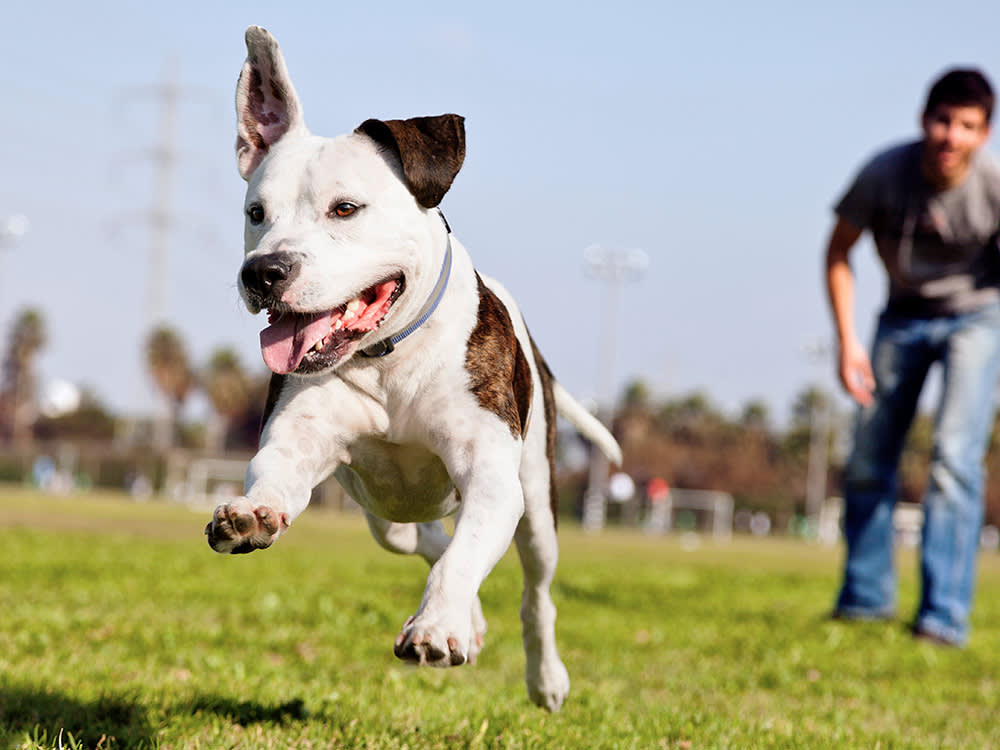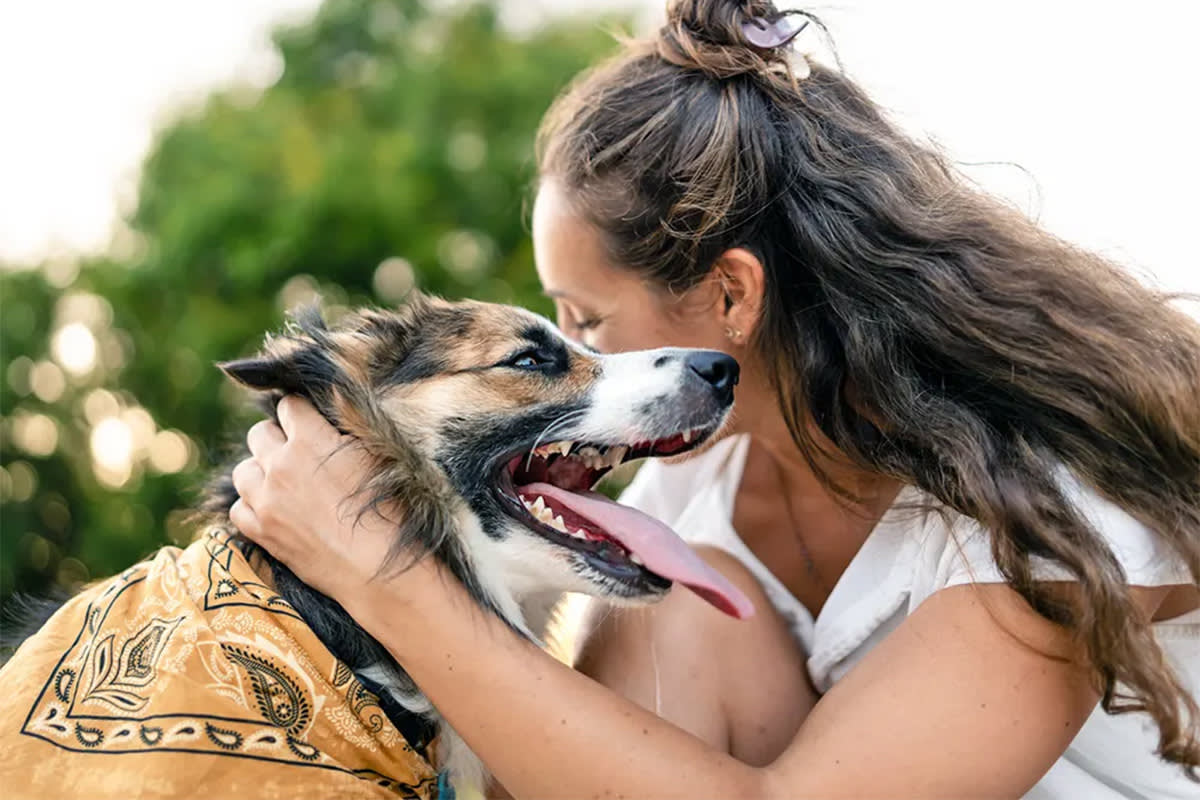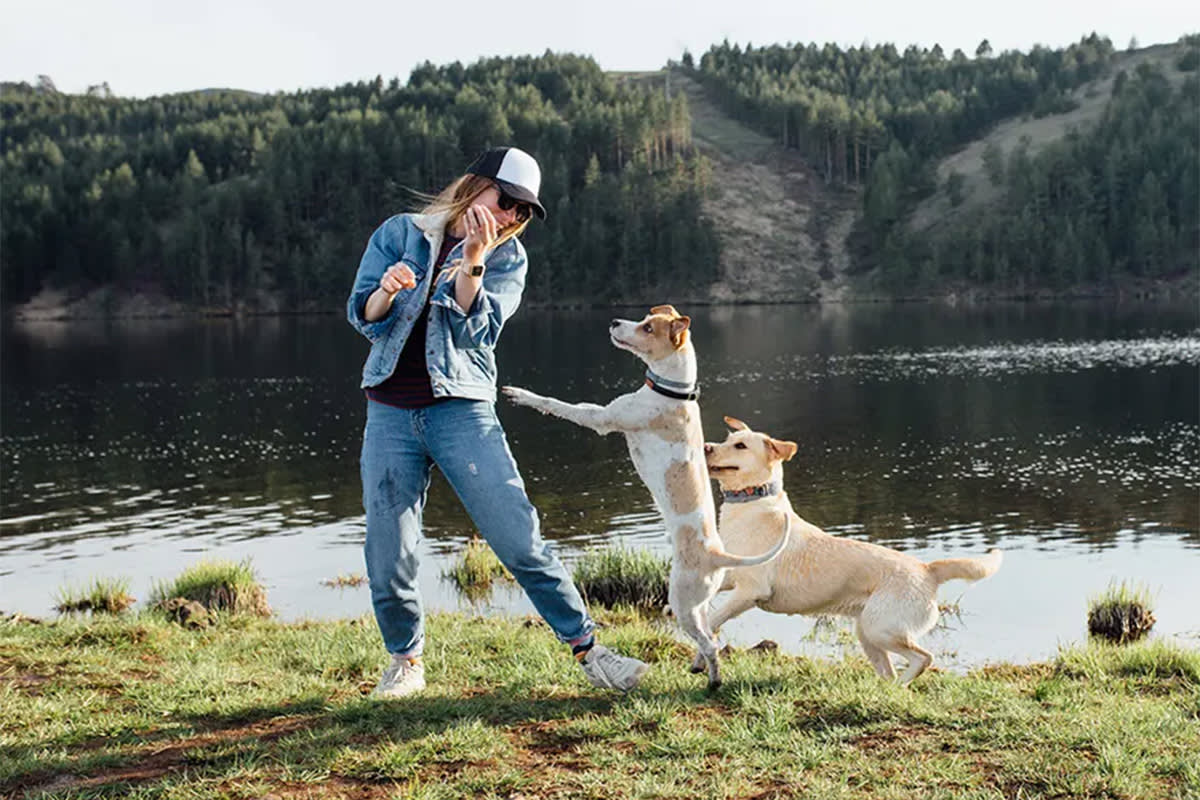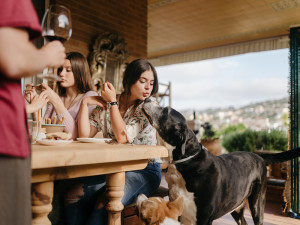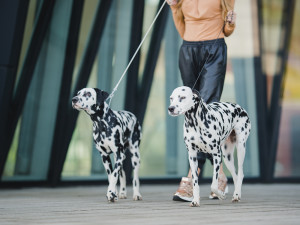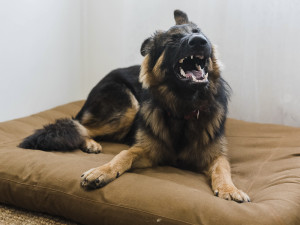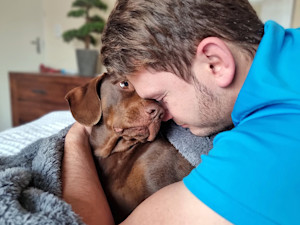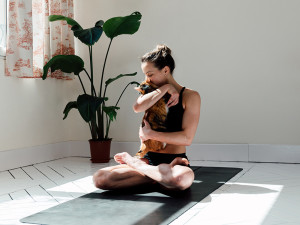Why Do Dogs Get So Excited?
Your pup’s enthusiasm truly gives a whole new definition to joie de vivre.
Every autumn, as the leaves pile up and the breeze begins to prick my skin with a faint chill, I think about one thing: a video I saw years ago of a dog running laps through his backyard. Every few moments, the pup would find a new leaf pile and dive in at full speed, burrowing through the mountain before popping out the other side and sprinting toward a new heap. It’s the kind of happiness to which most of us aspire — the reckless abandon of a child, but covered in fur and running on four legs.
This year, I decided to search for it and, to my surprise, could not. Instead, I discovered that whoever that dog was had been eclipsed by several other hounds, all of whom seem to have better search optimization. (Ah, how the web has changed!) Still, to my delight, there is no shortage of videos of dogs getting very, very excited about the leaves. A chief mascot of this season appears to be a Labrador named Stella,opens in new tab whose profile has risen enough to merit a broadcast news featureopens in new tab.
Trick question: All dogs are perfect! But find out which type is the best fit for you.
All of this got me wondering: Why do dogs get so excited? Is this the level of joy we’d all be able to embrace in our adult lives, were it not for tedious human realities like jobs, bills, and laundry day? Or are dogs somehow specially wired for enhanced joie de vivre? There was only one way to find out, so I asked the experts to break it all down for me.
Why do dogs get so hyped?
There’s no denying that many dogs can get rambunctious when properly stimulated. We’ve all seen those videos of dogs going absolutely gonzoopens in new tab when they hear the word “walk,” or running into walls at full speedopens in new tab when they have the zoomies. But according to applied animal behaviorist Renee Rhoadesopens in new tab, our pups’ nervous systems don’t function that differently from our own.
How much do you spend on your pet per year?
Like many experts, Rhoades likens dogs’ cognitive abilities to human toddlers — and if you’ve ever met a three-year-old, you know that they, too, can get pretty excited about the everyday things many of us jaded adults find mundane. “It will depend on the individual dog as to what they find truly exciting,” Rhoades adds, “but having a good understanding of canine body language can help guardians to get a good idea of what their dog is feeling.”
Every dog is different, so different stimuli might excite dogs and stress others out. But generally, Rhoades says, “dogs can get excited about anything that brings them consistent positive outcomes.” That would explain why some of the lowest-common-denominator pleasure sources seem to be things like walks, treats, and playtime.
She adds that we may occasionally interpret our dogs’ stress as excitement. This is why it’s important to understand their body language. For instance, when dogs pant and stick out their tongues, they might look super stoked but, in fact, they could be scaredopens in new tab or anxious in that moment.
Rick Sanders, registered professional dog trainer and owner of Empire State K9 Servicesopens in new tab, notes that instinct can play a role in driving dogs’ excitement as well. Consider, for example, when you come home from work and your dog starts running around in cute little circles and barking with glee. That specific dance is called “pack-greeting behavior,” he says, and it dates all the way back to dogs’ lupine, AKA wolf, ancestors.
Though not totally in the same way as wolfs, dogs can be pack animals, so when part of the group (meaning: you) is away and then returns, our pups might be extra happy. Domestic dogs also rely on their parents to survive, which could further motivate the behavior. At the same time, Sanders adds, “I wouldn’t try to link it into human emotion. That’s called anthropomorphism.”
Anthropomorphism happens when we try to attribute specific, complex human emotions, traits, and thought patterns to other creatures and entities. It’s an understandable instinct, but it can lead to misunderstandings with pets. While Rhoades confirms that pups do feel core emotions like joy, fear, and, yes, excitement, we also shouldn’t “label our dogs with emotions or descriptive characteristics that dogs do not possess, like guilt, stubbornness, and spite.”
How else can I tell if my dog is excited?
Much like human toddlers, Rhoades says, our pups tend to let more of their feelings out around humans with whom they share close bonds. At the same time, she says, dogs are a social and behaviorally complex species, so we can't say for sure that dogs are expressing all of their emotions for us to see.
As with so many canine quandaries, clocking your dog’s excitement will often come down to reading their body language in its environmental context. That will also help you figure out if your dog’s high energy comes from joyful arousal or stress.
Signs of excitement include:
Loose, open posture
Open mouth
Ears forward
Bright, open eyes
“Helicopter tail” (spinning at a high velocity in a circle)
“Studies have indicatedopens in new tab that a dog wagging their tail with a right bias correlates with a more positive physiological response comparative to a tail wagging left,” Rhoades adds, “so watching for this indicator among many others is likely to indicate the dog is feeling in more positive emotion.”
How excited is too excited?
As adorable as it might be to watch our dogs sprint through piles of leaves or chirp at the word “walk,” you might reach a point where your their energy levels pose risks for them and others. For example, Sanders brings up that hyper “pack-greeting behavior” again. It might be cute in moderation, but in more severe cases, he says, “It's just not a functional behavior. It's something that we stop.”
In the United States, tens of thousands of peopleopens in new tab seek emergency treatment each year for falls related to cats and dogs. Depending on where you live, if your dog knocks someone over, you can even be heldopens in new tab legally liableopens in new tab for their injuries. We never want to stifle our dogs’ sense of whimsy, but if your dog’s excitement tends to become explosive, it could be worth meeting with a professional to explore how to channel that energy in another way.
